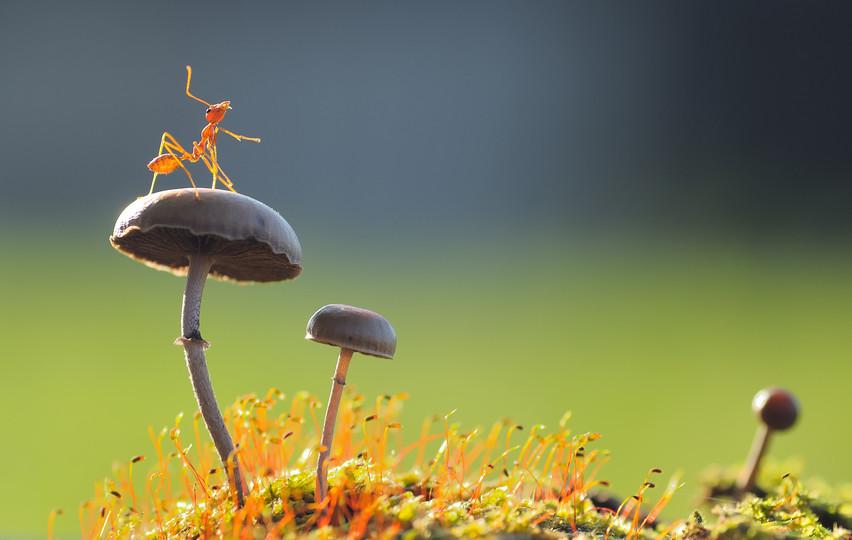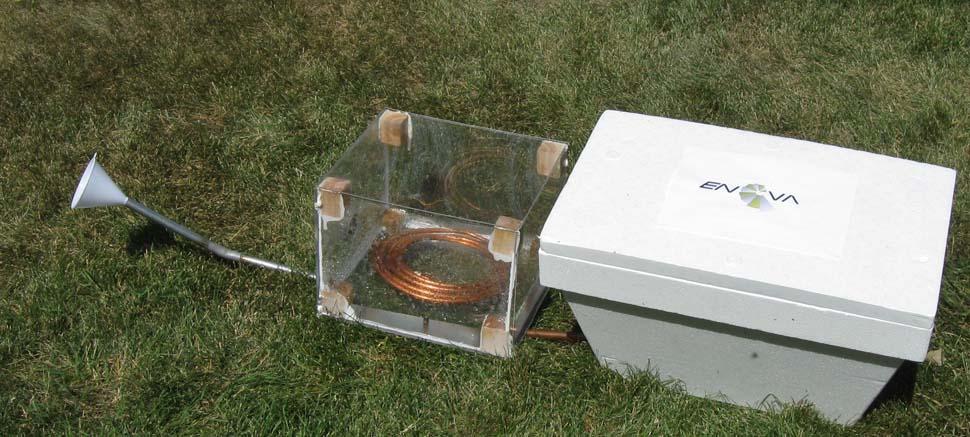Guest Blog - Strengthening the "Fragility of Grand Discoveries” With Biomimicry
Guest Blog: Strengthening the “fragility of grand discoveries” with biomimicry
The story of how Velcro came to be has become the stuff of legend. A Swiss electrical engineer named Georges de Mestral went on a hunting trip in the Alps in the early 1940s and noticed how burrs from burdock plants attached to his dog’s fur. He took a closer look, inspiration struck, and the world of textiles has never been the same since.
Would de Mestral have come up with that same idea had he not thought to look a bit closer at the burrs he pulled from his pup’s fur? Would Velcro have ever existed if de Mestral never decided to get a dog (or was more of a cat person)? Would someone else have dreamed up the same concept years later? We’ll never know.
In an essay he wrote for the Powell’s Books blog, author and physicist Leonard Mlodinow muses about what he calls “the fragility of grand discoveries.”
Mlodinow’s most recent two books – one about the role of randomness and chance in our everyday lives and the other about the evolution of scientific thought – led him to realize that a large amount of humankind’s greatest discoveries hinged on small decisions, chance encounters, and seemingly arbitrary choices. In his essay, he points to some examples of how world-changing scientific discoveries and theories could have been vulnerable to the smallest shift in decision-making. Isaac Newton (who apparently entertained few visitors) may never have started to develop the laws of motion had he not agreed to meet with astronomer Edmund Halley, whose question about planetary motion prompted Newton to work obsessively to learn more. Charles Darwin may never have set foot on the ship that would take him on his voyage of discovery if the captain’s first choice for an on-board naturalist didn’t bow out. Mlodinow cites a number of times that luck and chance seemed to be just as crucial to scientific breakthroughs as the hard work that followed. Some of the most iconic examples of innovations inspired by nature seem to be equally as subject to fortuitous connections and random chance. For example, the Shinkansen bullet train may not have become the engineering and design marvel that it is if not for a small newspaper advertisement that caught the lead engineer’s eye one day. According to Zygote Quarterly, Eiji Nakatsu, an amateur birdwatcher and lead engineer for high-speed train firm JR West, saw a tiny notice for a lecture an aviation engineer was giving at a Wild Bird Society meeting nearby. He and his team had been wrestling with how to lessen noise from the trains, both from traveling at high speeds and from the loud sonic boom that happened when trains exited tunnels. From this lecture, he realized he and his team could glean solutions by studying birds. By incorporating design inspiration from owls in flight and the shape of a kingfisher’s beak, the team designed the Shinkansen trains to travel even faster and more quietly, while using less electricity than before. Close calls make for compelling origin stories, but the sheer randomness of this approach to scientific innovation means that we may be missing a lot. It’s discouraging to think that small decisions and chance events have enough sway to knock innovators off course so easily, even with the rigors of the scientific process. So what can we do to strengthen this “fragility of grand discoveries?” We can start by looking in the right places to begin with. While we search high and low for ways to restore our soils, detoxify our materials, and cool our rapidly-warming planet (thinking up some crazy schemes in the process – anyone remember this one?), we seem to repeatedly forget that models for how to do these things already exist in nature. Looking to nature won’t automatically provide you with a definitive solution – nothing is that easy. But it will send you in the right direction. As a field of inquiry, biomimicry helps us, as Janine Benyus writes, “leapfrog to technologies that sip energy, shave material use, reject toxins, and work as a system to create conditions conducive to life.” Contrast the happenstance narrative with what happens when you bring nature to the design table. Take the innovators who participate each year in the Biomimicry Global Design Challenge. Right from the start, they work to solve pressing issues by looking to nature for models to mimic – a fast-track to sustainable solutions. For example, the team who won first prize in the 2015 student challenge developed the WindChill, an electricity-free refrigerator (watch a Tech Insider video about the design here). They tackled the problem of transporting and storing food in areas with little access to electricity by figuring out how mammals and insects regulate temperature and creating their design based on what they learned. The design is both energy-efficient and low-cost, and, if adopted on a wide scale, has the potential to make a serious dent in our food waste problem. The Biomimicry Global Design Challenge gallery of winners, finalists, and participants is full of examples of nature-inspired innovation in action – instances where studying the natural world’s forms, processes, and ecosystems allowed the teams to “leapfrog” right to designs that solve problems while treading lightly on our shared planet. We need solutions now. Part of what we do at the Biomimicry Institute is work to make sure that the scientific breakthroughs we need are not left to the whims of the fates. There’s no shortcut to doing the hard work of innovating, but we exist to make sure the architects of our world know that there are hundreds of millions of examples of how to solve some of our toughest problems all around us, if we know where to look. Go outside. Slow down. Notice. Learn. It’s hard to know exactly how and when the Muses, scientific or otherwise, will strike. But by imbuing your design approach with inspiration from nature, you’ll be stacking the odds in your favor that an elegant solution will be emerge, right in front of your eyes.This blog is reprinted in its entirety with permission from the Biomimicry Institute, Biomimicry in Design, February 9, 2016.
About the author:
Erin Connelly is the director of communications and outreach at the Biomimicry Institute, where she helps spread the word about how biomimicry is changing the world.





